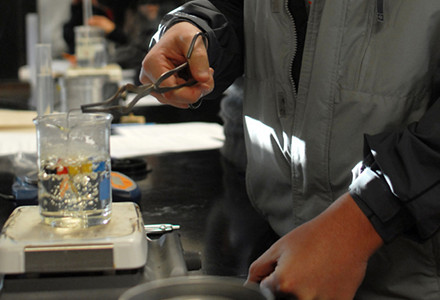Why Does Chemistry Matter In My Life?
| Author: | Lisa Hibler |
| Level: | High School |
| Content Area: | Chemistry |
| Author: | Lisa Hibler |
| Level: | High School |
| Content Area: | Chemistry |

Note: See all referenced files in the "Supplemental Files" section, at the end of this page.
This activity is designed to encourage students to apply knowledge to a new situation and to encourage writing across the curriculum. After completing units on atomic structure, electron configuration, periodic trends and bonding students will be asked to select an element from the periodic table that best represents who they are. Students will create a one page story that relates the properties of this element to themselves.
Students need to understand basic atomic structure and periodic trends in atomic radius, ionic radius, ionization energy and electronegativity. Knowledge of ionic and molecular bonding is not necessary, but may add to the creativity of the stories.
Pre-read the following excerpt from The Periodic Table by Primo Levi so you can relate the human characteristics to that of argon. Primo Levi uses words like inert, disinterested, static, abstention to describe his ancestors. He relates their lack of engagement in life to the behaviors of the inert noble gases.
“The little I know about my ancestors presents many similarities to these gases. Not all of them were materially inert, for that was not granted them. On the contrary, they were—or had to be—quite active, in order to earn a living and because of a reigning morality that held that “he who does not work shall not eat.” But there is no doubt that they were inert in their inner spirits, inclined to disinterested speculation, witty discourses, elegant, sophisticated, and gratuitous discussion. It can hardly be by chance that all deeds attributed to them, though quite various, have in common a touch of the static, an attitude of dignified abstention, of voluntary (or accepted) relegation to the margins of the great river of life.”
Use the What Element Would You Be? Grading rubric
For students with limited English language skills, the reading passage may be difficult to understand. In this case, discuss the personality attributes the author has listed and why they are similar to the properties of a noble gas.
This activity makes an excellent sub plan. If you introduce the idea to students prior to your absence they may choose to do some research before class.
There are many periodic table web sites where students can access information about specific elements.